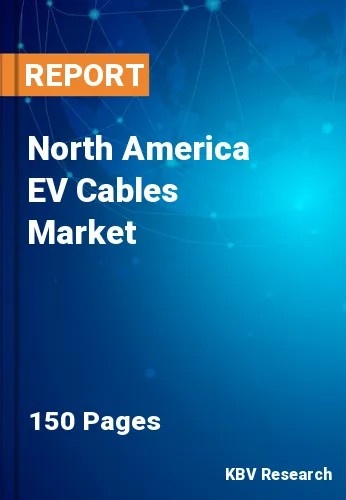The North America EV Cables Market would witness market growth of 15.4% CAGR during the forecast period (2023-2030).
EV cables serve various purposes in electric vehicles, including assisting in signal transmission and supplying power to different electronic and electrical systems. Electricity is transmitted through EV cables to power various on-vehicle equipment such as lighting, sensors, steering servos, air conditioning units, etc. Irradiation cables, general cables, battery cables, sensor cables, and other types of cables are included in automobiles.
For insulation, they are put together under a rubber or plastic covering. They are essential for sending and receiving sensor signals, communicating information about the vehicle's operation, and supplying power. One of the main factors propelling the expansion of the market is the advent of sophisticated electronics in electric vehicles.
As is the case with most of the automotive industry today, the automotive cable range focuses primarily on EV cable requirements. It includes automotive cables for the vehicle's powertrain units, as well as cables that are specific to the standards of Fiat, BMW, and other major manufacturers. These cables are used in starting, charging, lighting, signaling, and instrument panel circuits, as well as in traditional petrol and diesel, and electric vehicles.
Canada intends to make significant investments in the production of zero-emission electric cars (EV) and sustainable technology in the automotive industry. By collaborating with provincial governments, the Canadian government aims to achieve carbon neutrality by 2050. Similarly, in the US, in order to make electric cars (EVs) available to all Americans for both short- and long-distance travel, the federal government has set the 2030 target of having half of all new vehicles sold in the country to be emission-free. It has also committed to establishing a network of 500,000 chargers that is practical and equitable. Therefore, such developments will propel the growth of the market in the coming years.
The US market dominated the North America EV Cables Market by Country in 2022, and would continue to be a dominant market till 2030; thereby, achieving a market value of $3.7 billion by 2030. The Canada market is anticipated to grow at a CAGR of 18% during (2023 - 2030). Additionally, The Mexico market would register a CAGR of 17% during (2023 - 2030).
Based on Shielding Type, the market is segmented into Copper, Aluminium, and Others. Based on Application, the market is segmented into Charging Management, Engine & Powertrain, Battery & Battery Management, Power Electronics, and Others. Based on Voltage, the market is segmented into High, Medium, Low, and Very High. Based on Component, the market is segmented into Wires, Connectors/Terminals, and Fuse & Others. Based on EV Type, the market is segmented into BEV, HEV, and PHEV & Others. Based on Insulation Material, the market is segmented into Thermoplastic Elastomer, Silicon Rubber Insulation, Fluoro Polymers, and Others. Based on countries, the market is segmented into U.S., Mexico, Canada, and Rest of North America.
Free Valuable Insights: The Worldwide EV Cables Market is Projected to reach USD 23.1 Billion by 2030, at a CAGR of 15.7%
The market research report covers the analysis of key stake holders of the market. Key companies profiled in the report include HUBER+SUHNER AG, TE Connectivity Ltd., Leoni AG, Aptiv PLC, Nexans S.A., Sumitomo Electric Industries, Ltd., Elkem ASA (Bluestar Elkem International Co., Ltd. S.A.), Sinbon Electronics Co., Ltd., Coroplast Fritz Müller GmbH & Co. KG, and Philatron Wire & Cable
By Shielding Type
By Application
By Voltage
By Component
By EV Type
By Insulation Material
By Country
Our team of dedicated experts can provide you with attractive expansion opportunities for your business.

